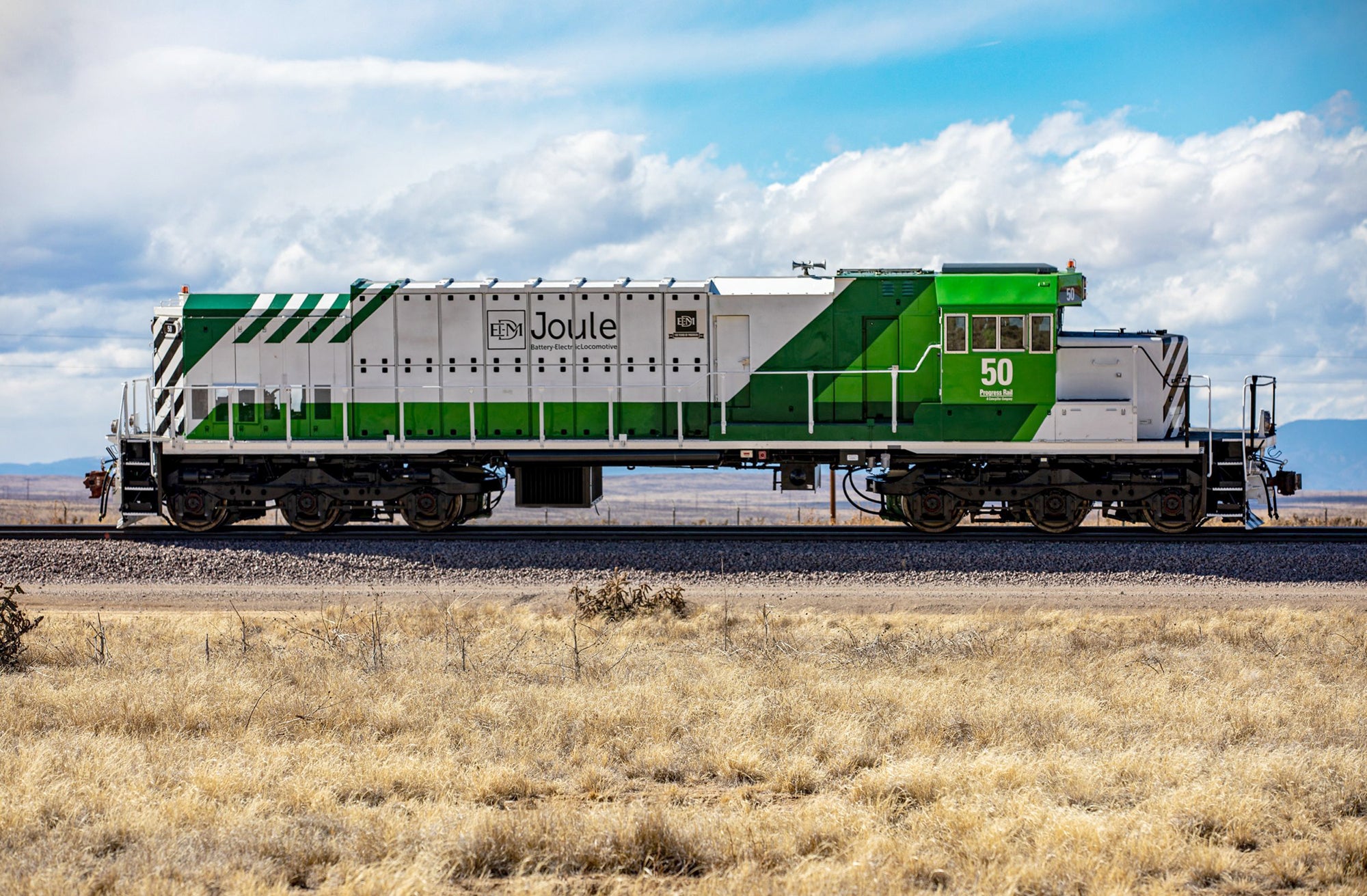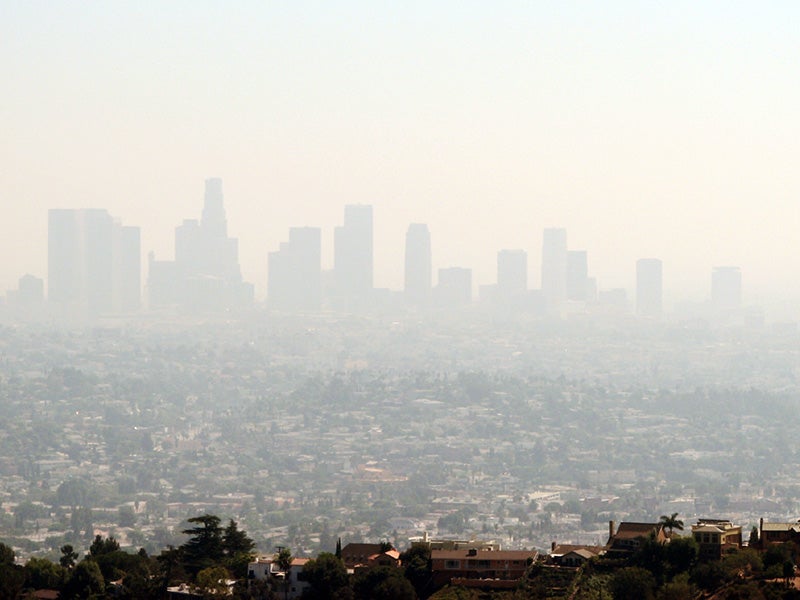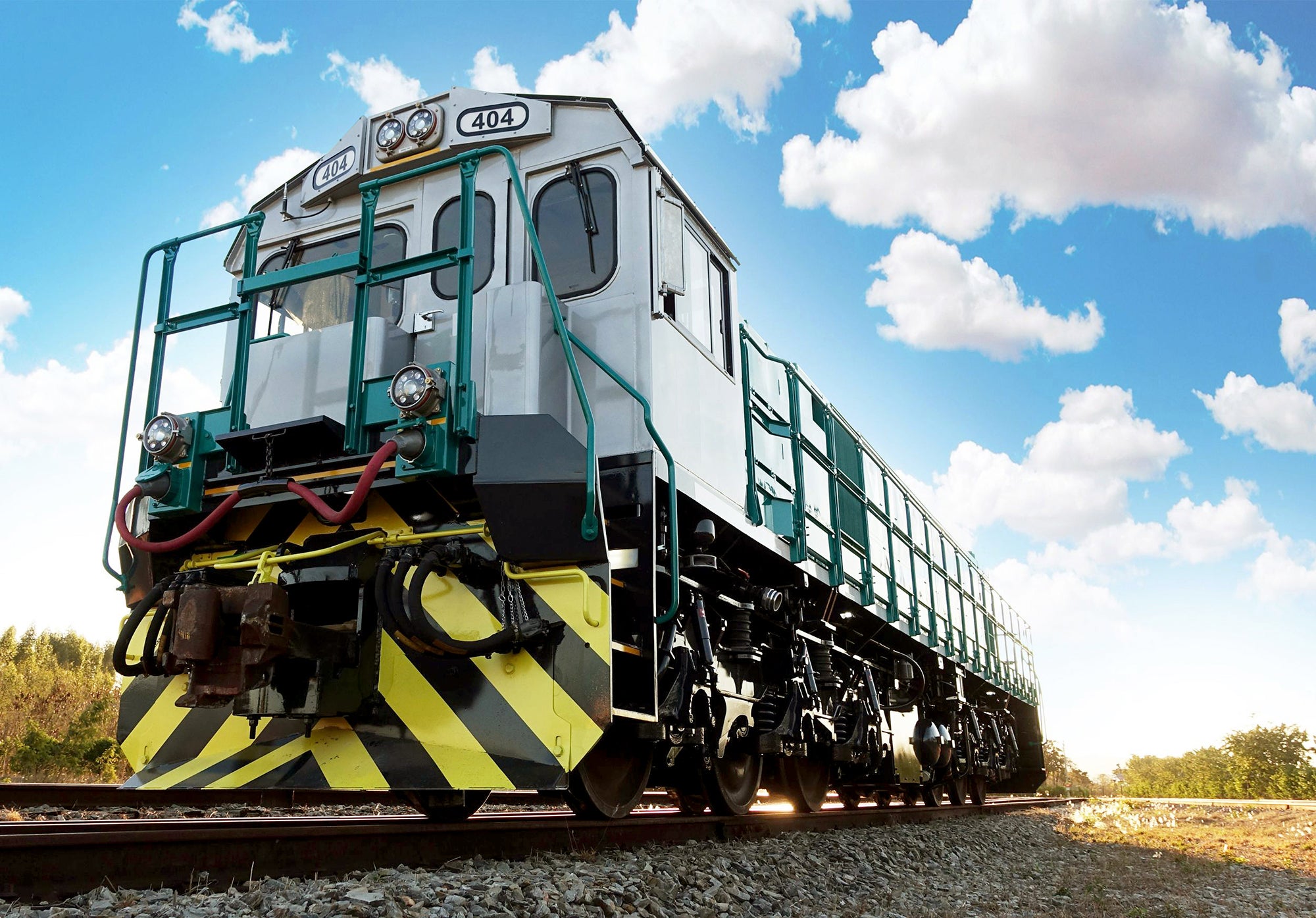Four Facts the Rail Industry Doesn’t Want You to Know About Zero-Emissions Trains
With California charting a course for zero-emissions rail, some of America’s oldest monopolies are conniving to hit the brakes on clean air. Don’t believe their misinformation.
To hear some rail trade groups talk about zero-emissions rail, one would assume electric rail either hadn’t yet been invented or was some rarified technology used only in tiny pockets of the world. But in fact, the electric locomotive was invented decades before diesel-powered locomotives, and today electric rail is the global standard. If you want high-speed, efficient, and clean transportation, think electric rail.

Progress Rail’s EMD Joule Battery Electric Locomotive. (Progress Rail)
To that end, California passed the first zero-emissions rail standard in the U.S. in 2023, designed to shift all locomotives operating in the state to zero-emissions over the coming decades. California was driven both by an imperative to clean up its historic air quality problems (at its peak, the rule will prevent 63 tons per day of smog-forming NOx, making it the single largest emissions reduction effort in California’s plan to meet federal clean air standards) and also by the permission to do so clearly granted to the Golden State in the Clean Air Act.
Now, Californians are waiting anxiously for the Environmental Protection Agency (EPA) to authorize implementation of the rule so our air agency can get to work cleaning up California’s smog — while entrenched rail trade groups have reared their heads like 19th century villains and are lobbying hard to undermine the rule. Here are four inconvenient facts these monopolies don’t want you to know.
1. Old diesel rail is cutting lives short in California — and the rest of America.
Old diesel locomotive technology has largely stood at a standstill while other forms of transportation have gotten cleaner and more efficient. That old reliance has cost us with our health: diesel exhaust wreaks havoc on human health. It contains known carcinogens and is one of the dirtiest kinds of transportation pollution there is. Inhaling diesel pollution can lead to asthma and lung disorders, heart issues, impacts to pregnancy and reproductive health, and on and on. While rail is a more efficient way to move cargo than trucks, because locomotive diesel engines are dirtier and lower-tech than truck engines it is now dirtier to move goods by rail than by truck in California.
Consider, for example, that Union Pacific’s Colton Railyard in Southern California is 5.5 miles long and sits just 350 feet from the nearest homes and neighbors a local high school. At the time the California Air Resource Board issued its 2008 Health Risk Assessment for the site, the railyard accounted for a roughly 35% increase in cancer risk for those most highly exposed.
California’s new In-Use Locomotive Rule will provide staggering health benefits for California residents, which is a testament to the incredible levels of pollution the rail industry has been pumping out in our neighborhoods. In total, the rule is slated to save 3,200 Californians’ lives and deliver $32 billion in health savings.

Smog blankets the city of Los Angeles. (Ben Amstutz)
2. The rest of the world is lapping us on electric rail.
Listening to rail trade groups speak about the shift to zero-emissions rail is eerily similar to tuning in to a newscast from the 1950s when we still burned lead in gasoline and smoked cigarettes in restaurants. Here’s a quick list of countries that are outperforming the U.S.: Switzerland (100% electrification), India (94%), South Korea (78%), China (75%), the entirety of the European Union (56%), Russia (51%), and the United Kingdom (38%). Even Australia (10%) is far ahead of us.
The U.S. has electrified a mere 1% of our rail system, leaving a fair portion of our infrastructure incredibly outdated. We have a lot of work to do, and it should surprise no one that California — long the land of innovation, new technology, and a dire smog problem — is stepping up to make the shift.
When it comes to efficiency and speed, electric rail has long outperformed diesel. In fact, we can’t build a high-speed rail system in the U.S. without shifting to electric rail as much of the rest of the world has done.
3. The shift to zero-emissions rail is entirely attainable within our lifetimes — both economically and technologically.
In the last five years, India has electrified 45% of its railways and is now at 94% electric rail with the goal of hitting 100% by 2025. That’s decades before California’s timeline. Think of a famous rail line in the world — say, the Trans-Siberian Railroad, the longest rail line in the world — and there’s a good chance that it is electrified (it is — all 9,300 kilometers).
Zero-emissions locomotive technology is clearly commercially available — either with catenary systems that deploy overhead wires to power locomotives, battery electric locomotives that are expected to achieve price parity with diesel in the near future, or a combination of both battery-electric and catenary lines with discontinuous catenary systems that offer flexibility across non-electrified rail systems.
4. States are well within their authority to shift to zero-emissions rail within state lines.
The Clean Air Act recognizes California’s authority to clean up a major source of health-harming diesel pollution and provides a mechanism for EPA review of state locomotive requirements to ensure they are feasible and necessary. The state’s rule is also commonsense policy — it offers flexibility to rail operators with three major paths for compliance, and includes a gradual shift to zero-emissions over the coming decades.
Furthermore, the rule only applies to locomotives operating within California, steering clear of interstate commerce complications. Once EPA grants the waiver for the In-Use Locomotive Rule, other states whose air quality violates federal standards could also adopt it.
It’s also worth noting that despite their handwringing and misinformation campaigns, the rail companies fighting these new standards are some of the wealthiest and largest companies in the world. Corporations such as BNSF and Union Pacific Railroad have benefited from lavish subsidies and U.S. tax-payer funded giveaways over the last century and a half.
These companies can afford to clean up their pollution with cleaner technology that most of the rest of the world has already adopted. The U.S.’s reliance on diesel locomotives is wildly outdated, and in need of an overhaul. So don’t believe the misinformation rail industry voices have fired up — California is lighting a critical path for zero emissions, with the urgency of an air quality crisis pressing it forward and legal authority well in hand.
The California Regional Office fights for the rights of all to a healthy environment regardless of where in the state they live; we fight to protect the magnificent natural spaces and wildlife found in California; and we fight to transition California to a zero-emissions future where cars, trucks, buildings, and power plants run on clean energy, not fossil fuels.
